How to Plan a Floor Sanding Project for Large Spaces
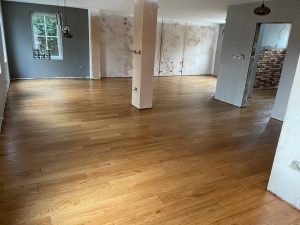
Planning a floor sanding project for large spaces can be daunting, but with the right approach, you can achieve stunning results. Whether you’re renovating a spacious London home or a commercial property, thorough planning is crucial to ensure the project runs smoothly and efficiently. This guide will walk you through the steps to successfully plan and execute a floor sanding project for large areas.
Assess the Space
Before starting your project, it’s essential to assess the space you’re working with. Take note of the floor’s condition, including any damage, stains, or areas that may need extra attention. Measure the area to determine the amount of materials you’ll need and to help plan the project’s timeline.
Gather Necessary Tools and Materials
Having the right tools and materials is key to a successful floor sanding project. For large spaces, you’ll need:
- Drum sander and edge sander
- Sandpaper in various grits (coarse, medium, fine)
- Vacuum cleaner with a HEPA filter
- Wood filler for repairs
- Protective gear (gloves, mask, goggles)
- Finishing products (stain, sealant, varnish)
Create a Detailed Plan
A detailed plan will help you stay organised and ensure you cover all aspects of the project:
1. Timeline
Estimate the time required for each phase of the project, including preparation, sanding, cleaning, and finishing. Allocate extra time for unforeseen issues that may arise.
2. Budget
Determine your budget for the project, including the cost of materials, tool rentals, and any professional help you may need. Having a clear budget will help you manage expenses and avoid overspending.
3. Sequence of Work
Plan the sequence of work to ensure a smooth workflow. Start with repairing any damaged areas, followed by sanding, cleaning, and finishing. Work systematically to cover the entire space efficiently.
Preparation
1. Clear the Area
Remove all furniture, rugs, and decorations from the space. Ensure the area is clean and free of dust and debris. This preparation will make the sanding process smoother and more efficient.
2. Repair Damages
Inspect the floor for any damages, such as loose boards, nails, or deep scratches. Use wood filler to repair these areas and ensure a smooth surface for sanding.
Sanding the Floor

1. Start with Coarse Grit Sandpaper
Begin by using coarse grit sandpaper (24-36 grit) to remove the old finish and level the surface. Move the sander in the direction of the wood grain to avoid scratches and achieve an even finish.
2. Progress to Medium and Fine Grits
Gradually move to medium grit (60-80 grit) and then fine grit (100-150 grit) sandpaper. This step-by-step approach ensures a smooth surface ready for finishing. Always vacuum between each sanding pass to remove dust and debris.
3. Use an Edge Sander for Corners and Edges
Edges and corners can be challenging to reach with a drum sander. Use an edge sander to tackle these areas, ensuring a consistent finish throughout the space.
Cleaning and Finishing
1. Thorough Cleaning
After sanding, clean the floor thoroughly to remove all dust. Use a vacuum with a HEPA filter and a damp cloth to ensure the surface is dust-free before applying the finish.
2. Apply the Finish
Choose a finish that suits your style and the floor’s use. Options include polyurethane, oil-based finishes, and wax. Apply the finish according to the manufacturer’s instructions, allowing adequate drying time between coats.
Post-Project Maintenance
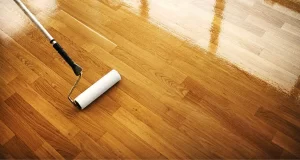
Maintaining your newly sanded and finished floors is crucial for long-lasting beauty and durability. Follow these maintenance tips:
- Regularly sweep and vacuum to remove dirt and debris.
- Use protective pads under furniture to prevent scratches.
- Clean spills immediately to avoid staining.
- Refinish the floor as needed to maintain its appearance and durability.
Conclusion
Planning a floor sanding project for large spaces requires careful preparation and organisation. By assessing the space, gathering the necessary tools and materials, and following a detailed plan, you can achieve professional-quality results. For homeowners in London, this guide provides the essential steps to ensure your floor sanding project is a success. If you prefer professional assistance, our certified floor sanding experts are here to help. Contact us today to learn more about our services and how we can assist with your home improvement projects.

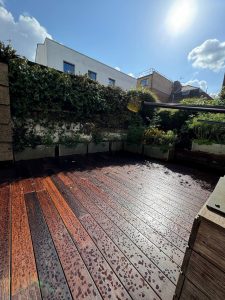


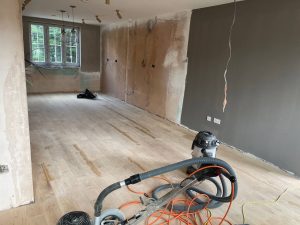
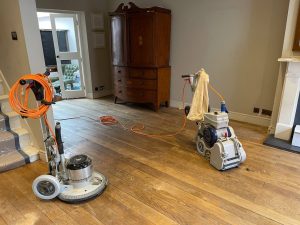

Buffing and one coat finish
[Read more...]
How to Choose the Right Sealant for Your Sanded Floors
How to Choose the Right Sealant for Your Sanded Floors Choosing the right sealant[Read more...]
Wood floor nailing
[Read more...]
How to Handle Floor Stains from Pets
How to Handle Floor Stains from Pets Pets bring joy and companionship to our homes,[Read more...]
Innovations in Floor Sanding Technology
The field of floor sanding has seen significant advancements in recent years, making the process[Read more...]
WOOD FLOOR SANDING AND LACQUERING/SEALING
[Read more...]
Choosing the Right Floor Sanding Service in London
When it comes to revitalising your wooden floors, selecting the right floor sanding service is[Read more...]
Floor Board Restoration
Restoration Whilst you may believe that floor sanding itself is classed as restoration, floor restoration[Read more...]
Floor Sanding Safety Tips for Homeowners
Floor sanding can dramatically transform the look of your home, but it’s important to approach[Read more...]
How to Create a Vintage Look with Floor Sanding and Finishing
How to Create a Vintage Look with Floor Sanding and Finishing Creating a vintage[Read more...]